Most fans of astronomy and cosmonautics have probably heard the term Pale Blue Dot. This is the name of perhaps the most famous photo of our planet in history. The image was taken in 1990 by the Voyager 1 spacecraft from an incredible distance of 6 billion kilometers.
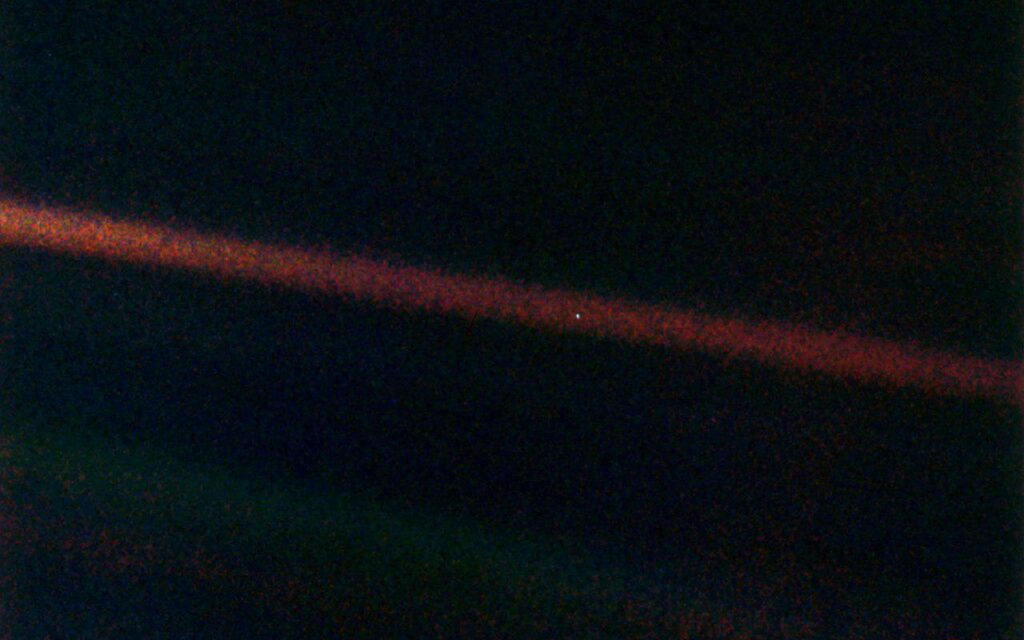
What is much less known is that initially NASA did not want to take such a photo. The famous popularizer of science, Carl Sagan, took several years to convince the aerospace administration. So, on the occasion of the International Earth Day celebrated today, we would like to tell the story of this amazing image.
Unique Position of Voyager 1
In 1977, NASA launched a pair of Voyager probes. Their target was the giant planets of the Solar System. The spacecraft had an identical design, but different flight plans. And after Saturn, their paths parted forever. Voyager 2 went on to Uranus and Neptune. As for Voyager 1, its program included a visit to Titan, which excluded the further possibility of sending the spacecraft to other planets of the Solar System.
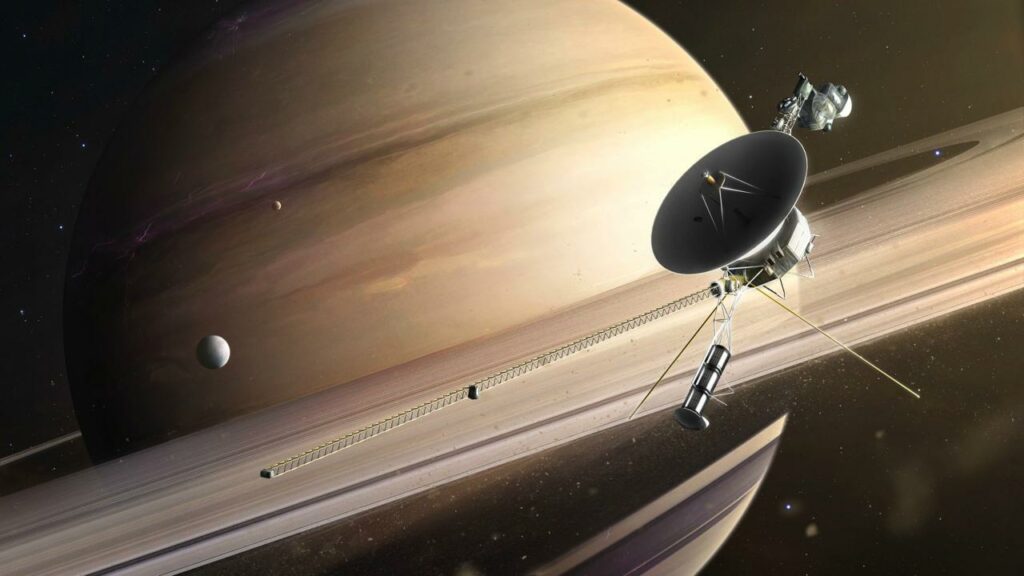
After the passage of Titan, Saturn’s gravity noticeably accelerated Voyager 1 and sent it “up” in relation to the plane of the ecliptic (thus, the Earth messenger was able to observe the Solar System “from above”). Therefore, it became the fastest spacecraft in history.
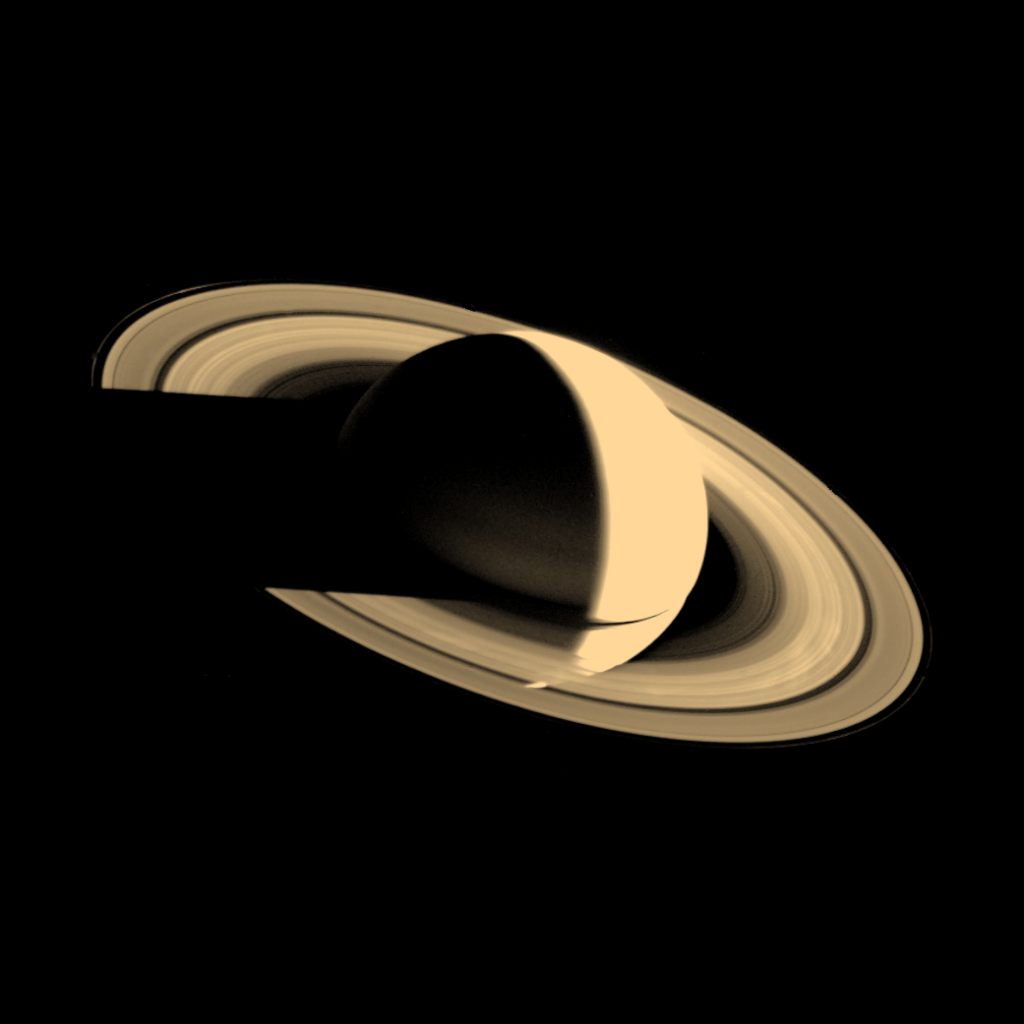
Around this time, the scientist and popularizer of science Carl Sagan came up with the idea to use the unique position of Voyager 1 in order to take an image of our planet from a record distance. He admitted that such a photo would not have much scientific significance. According to Sagan, the value of the image would be different. Having seen the Earth from afar, humanity had to realize our place in the Universe and the fragility of our native planet.
Many ordinary NASA employees supported Sagan’s proposal, but the organization’s leadership opposed it. He explained that the Sun would be too close to the Earth in the field of view of the Voyager 1 camera and could damage the fragile optics of the apparatus.

Sagan did not accept the refusal. And yes, direct sunlight was indeed capable of disabling the optics of the probe. But the fact is that by that time, Voyager 1 had already officially completed its mission. There were no potential targets left on the flight path of the apparatus to study, so there was still not much meaning in protecting its cameras. Therefore, in the following years, Sagan repeated his proposal several times.
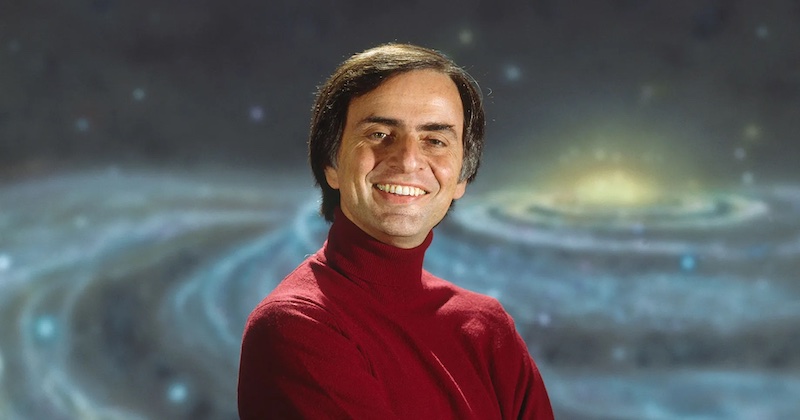
The silence had been broken in 1989, when Voyager 2 flew over Neptune and completed the main part of its mission. After that, NASA management finally gave approval to implement Sagan’s idea.
“Family portrait” of the Solar System
The shooting of the Earth required careful preparation, which stretched for almost six months. First, the engineers needed to turn on the Voyager 1 cameras (they were deactivated immediately after the Saturn flyby in 1980) and make sure that they were in working condition. Secondly, it was necessary to make a shooting plan. The fact is that Voyager 1 was supposed to take not just an image of one Earth, but a real “family portrait” and capture all the planets of the Solar System. Therefore, the mission specialists had to carry out a number of calculations to determine the optimal shooting parameters for each of them.
Another important factor was the huge distance. By that time, Voyager 1 had moved 6 billion km away from Earth, and the radio signal emitted from the planet took 5.5 hours to reach the spacecraft. This could not but affect the data transfer speed, which significantly slowed down the preparation of the “photo shoot of the century”.

Finally, after completing all calibrations and calculations, Voyager 1 was prepared for shooting. On February 14, 1990, it took 60 images of the Solar System, which depicted the Sun, Venus, Earth, Jupiter, Saturn, Uranus and Neptune.
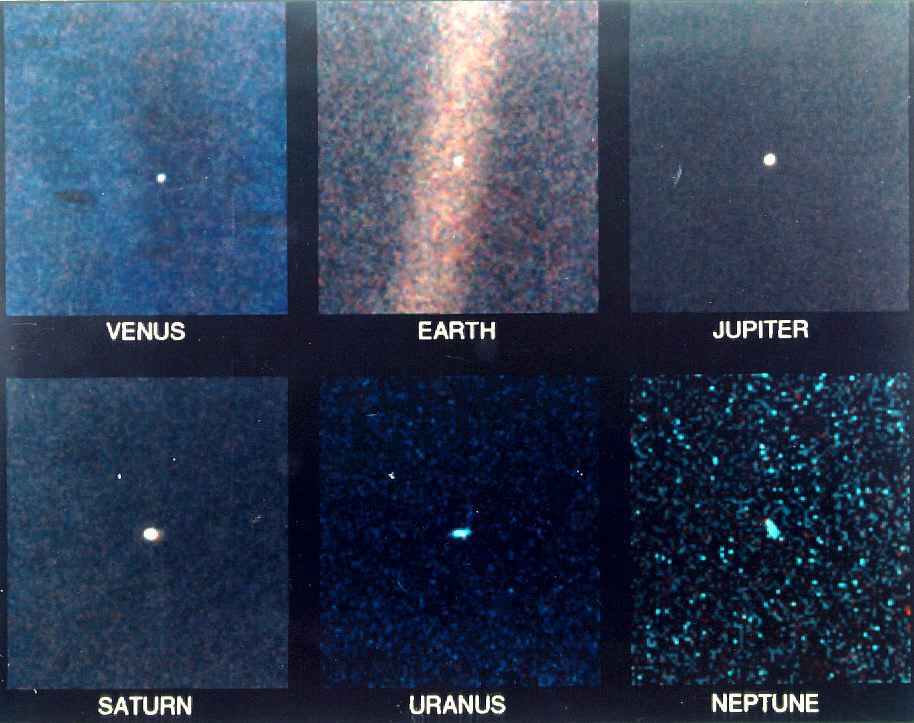
Mercury, Mars and Pluto were not on the “family portrait”. Mercury was prevented from taking a picture by its proximity to the Sun, Mars was not visible due to the effect of sunlight on the camera optics. As for Pluto, which was still considered a planet, due to its small size and significant distance from the Sun, NASA experts decided not to even try to get an image of it.
Photo of the Century
Of course, among the entire “family portrait” of the Solar System, the most attention was paid to the image, which captured a small pale blue dot that occupied only 0.12 pixels.
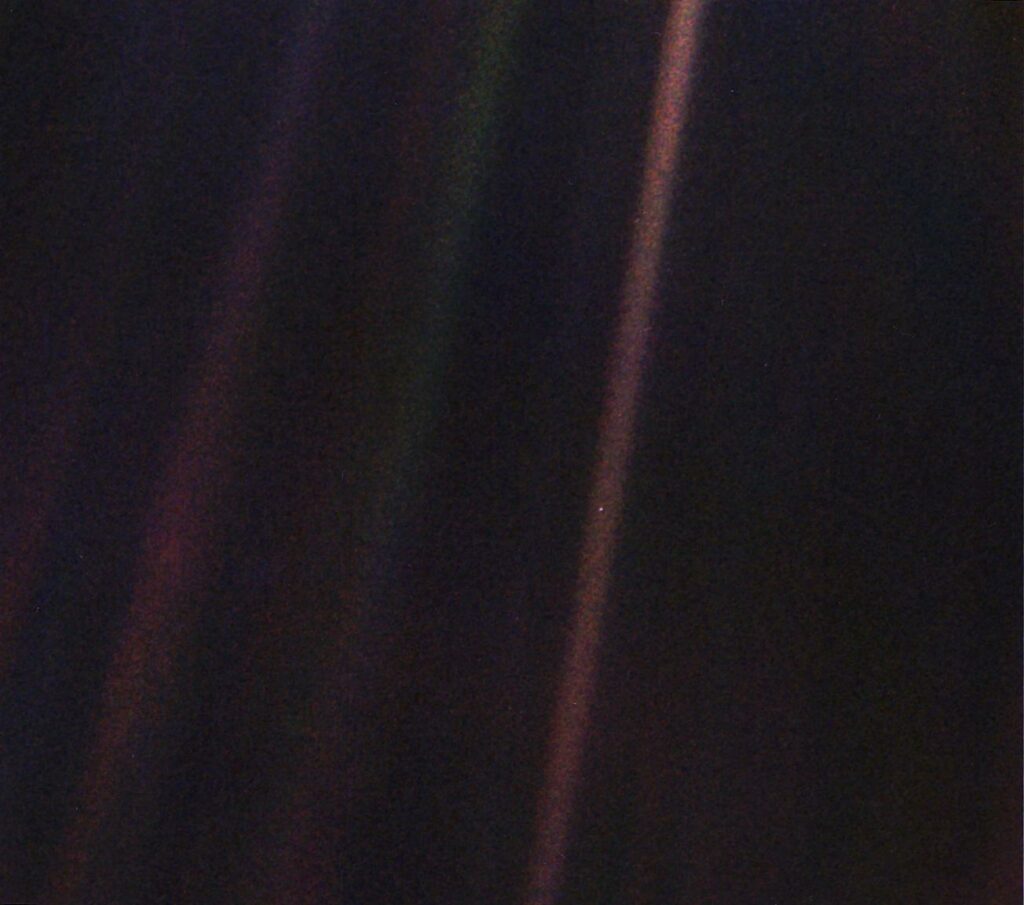
In the book “Pale Blue Dot: A Vision of the Human Future in Space” Carl Sagan commented on this photo:
Consider again that dot. That’s here. That’s home. That’s us. On it, everyone you love, everyone you know, everyone you ever heard of, every human being who ever lived, lived out their lives. The aggregate of all our joys and sufferings, thousands of confident religions, ideologies and economic doctrines, every hunter and forager, every hero and coward, every creator and destroyer of civilizations, every king and peasant, every young couple in love, every hopeful child, every mother and father, every inventor and explorer, every teacher of morals, every corrupt politician, every superstar, every supreme leader, every saint and sinner in the history of our species, lived there on a mote of dust, suspended in a sunbeam.
The earth is a very small stage in a vast cosmic arena. Think of the rivers of blood spilled by all those generals and emperors so that in glory and in triumph they could become the momentary masters of a fraction of a dot. Think of the endless cruelties visited by the inhabitants of one corner of the dot on scarcely distinguishable inhabitants of some other corner of the dot. How frequent their misunderstandings, how eager they are to kill one another, how fervent their hatreds.
Our posturings, our imagined self-importance, the delusion that we have some privileged position in the universe, are challenged by this point of pale light. Our planet is a lonely speck in the great enveloping cosmic dark. In our obscurity — in all this vastness — there is no hint that help will come from elsewhere to save us from ourselves.
The Earth is the only world known so far to harbor life. There is nowhere else, at least in the near future, to which our species could migrate. Visit, yes. Settle, not yet. Like it or not, for the moment the Earth is where we make our stand.
After 32 years, Sagan’s words do not lose their meaning, but, on the contrary, have added to their relevance. As for the image, today it is confidently included in the list of the most important photos in history. In 2020, in honor of the thirtieth anniversary of Pale Blue Dot, NASA even published a new version of it.
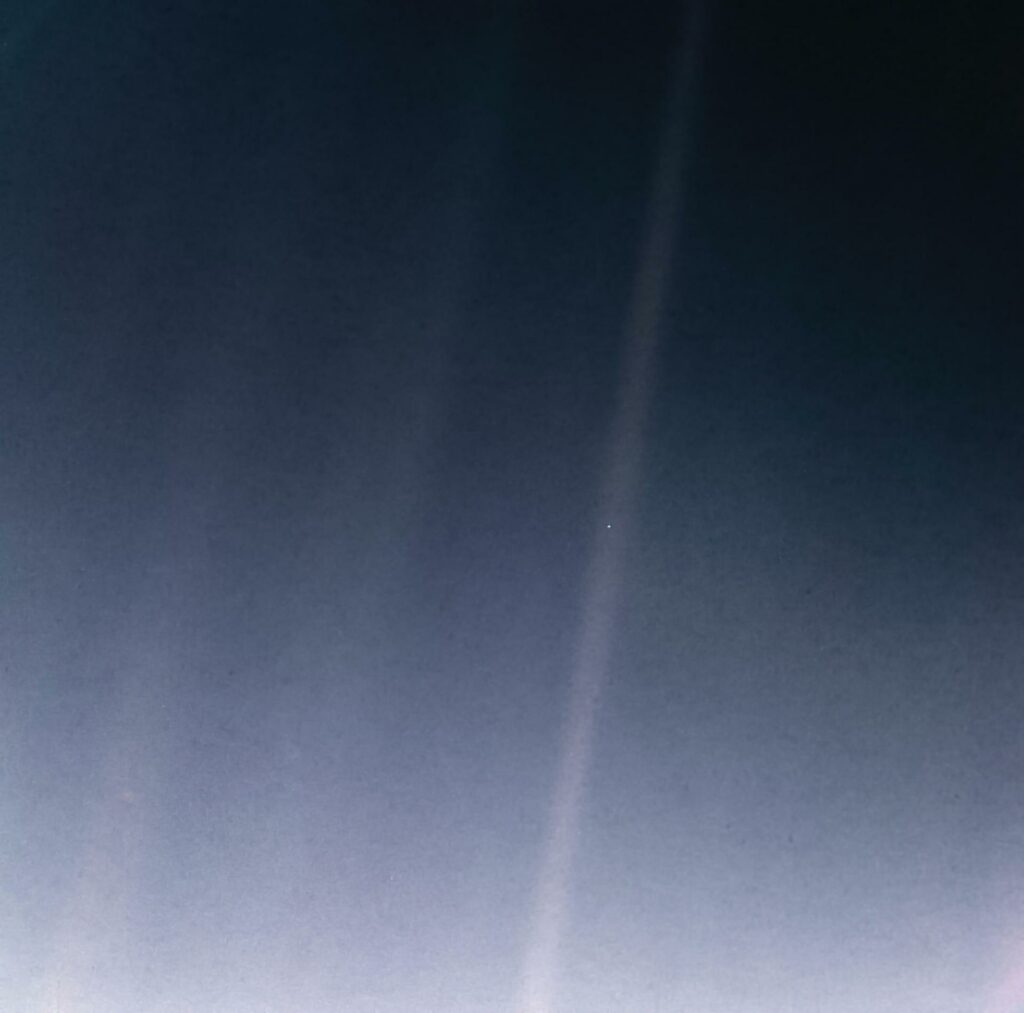
Pale Blue Dot was the last image in the history of the Voyager program. Even if now NASA suddenly wants to make a new version of this frame, both devices simply have no energy left to reactivate their cameras.
However, in the foreseeable future we may still get a “remake” of Pale Blue Dot. The New Horizons probe exploring the Kuiper Belt has already moved further from Earth than Voyager 1 in 1990, and it still has enough energy to take a similar picture. But so far, NASA management is in no hurry to take such steps, motivating it with familiar fears that sunlight can damage the optics of the probe. But as soon as New Horizons completes the main part of its mission, we will have a good chance to see again what the Earth looks like from the far reaches of the Solar System. Perhaps this will help remind humanity how fragile our world really is.

